To provide you with the best experience, cookies are used on this site. Find out more here.

To provide you with the best experience, cookies are used on this site. Find out more here.

To build your own Itinerary, click  to add an item to your Itinerary basket.
to add an item to your Itinerary basket.
Already saved an Itinerary?


You are here: Home > Ideas & Inspiration > Top Ideas > Top Sculptures and Artefacts
Read our guide to some fascinating sculptures, memorials, artefacts and works of art just waiting to be explored in and around the Royal Borough of Windsor and Maidenhead. There are familiar landmarks such as the Copper Horse in Windsor, as well as hidden gems off the beaten track like Sir Antony Gormley’s Edge II sculpture in Eton.
All of these objects can be seen for free (Cliveden is free for National Trust members) but please check any local parking arrangements/charges and access arrangements, for example the Copper Horse is situated in the middle of Windsor Great Park so necessitates a walk, cycle, etc and the Hardy Altarpiece can be viewed by visitors during All Saints Church Open House.
We’ve used the destination finding app what3words to help you locate these places. After each attraction below, click on the 3-word link (///word.word.word) in order to navigate. Here's a fuller guide on how to use the what3word addresses. Or if you know what to do, use the addresses below to start exploring.
Experience the ancient landscape and fascinating landmarks of Windsor Great Park. Here are some of the highlights.
The Copper Horse is one of the most striking sculptures in the Royal Borough. The vast bronze sculpture of horse and rider is set high up on a level pile of slabs on Snow Hill and can be seen from miles away in many directions. For those who walk or run from Windsor Castle along the three-mile Long Walk, this distant statue on Snow Hill is their goal and the view their reward!
The statue depicts George III on horseback and was commissioned by George IV as a tribute to his father. It was sculpted by Sir Richard Westmacott (1775-1856) 1824-30 and erected in October 1831. The Copper Horse is very similar to the late 18th-century equestrian statue of Peter the Great in St Petersburg, created by the French sculptor Étienne-Maurice Falconet. The Latin inscription Georgio Tertio | Patri optimo | Georgius Rex translates to To George the Third | the best of fathers | King George. This is somewhat ironic, however, as George III and George IV were known to have despised one another!
The view from the Copper Horse is astounding and well worth the effort to get there. Visitors can reach the Copper Horse from the Long Walk approach or by parking at one of Windsor Great Park's car parks near Bishops Gate or Rangers Gate.
///breed.terms.vote
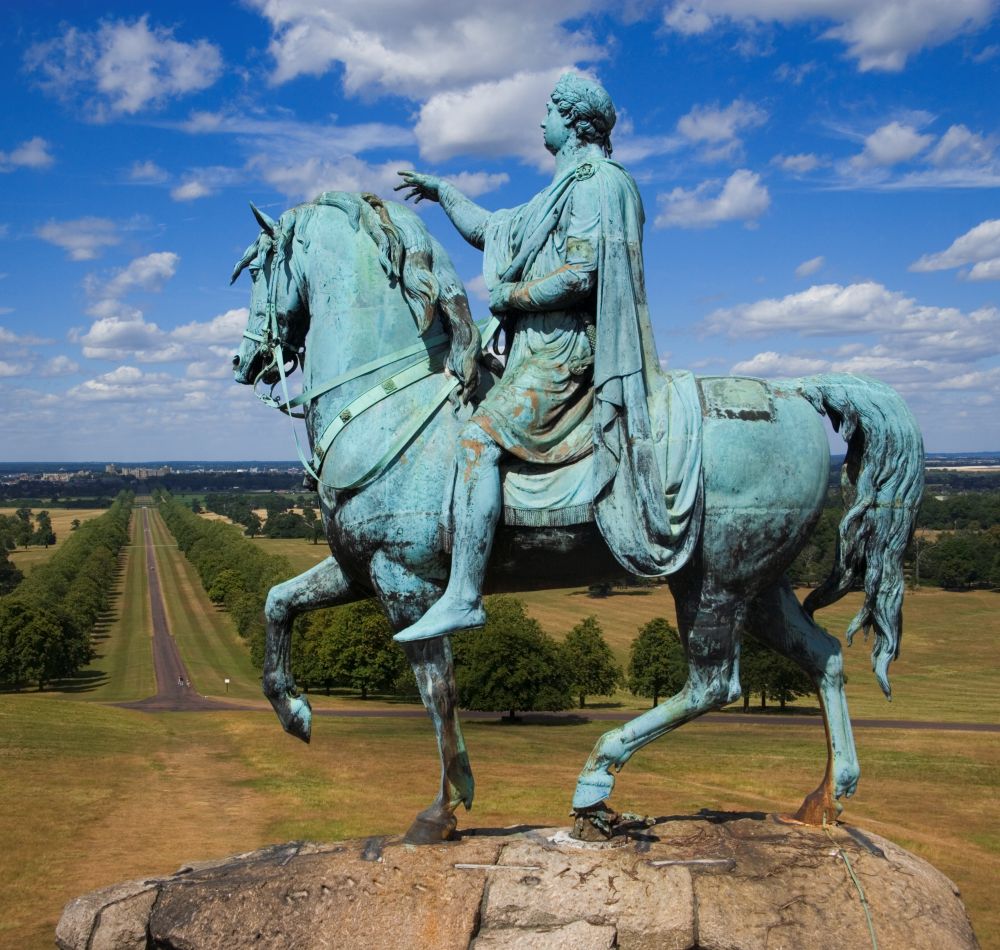
The Copper Horse and Long Walk, Windsor Great Park
The tree planting on Queen Anne’s Ride (originally Queen’s Walk) was established in 1708 and this path was where Queen Anne enjoyed riding her horse-drawn carriage. Horse riders, dog walkers, runners and walkers can share this royally-inspired walk, admiring the sweeping views of Windsor Castle below. At the southern end of the Ride you’ll discover the Jubilee statue. Sculpted by Philip Jackson, it is the only statue of Queen Elizabeth II on horseback to have been commissioned to date. It was officially unveiled to mark the Golden Jubilee in 2002.
///limbs.congratulations.sheets
These ruins arrived at Windsor Great Park in 1818 from the Roman city of Leptis Magna in the Libyan desert to be reconstructed in the early 19th century at Virginia Water under the directorship of Sir Jeffry Wyatville. It was fashionable at the time to create a folly that was built to look like a genuine Roman relic.
The stones have been restored with all of the stone and bricks used coming from the original site, and all of the building methods remaining in keeping with those used in the early 19th century.
Because the ruins are old and delicate they are now enclosed within a fence line, but you can still get remarkably close to these impressive stones and restoration in 2009 meant that even more of them can now be seen.
///wake.public.hills
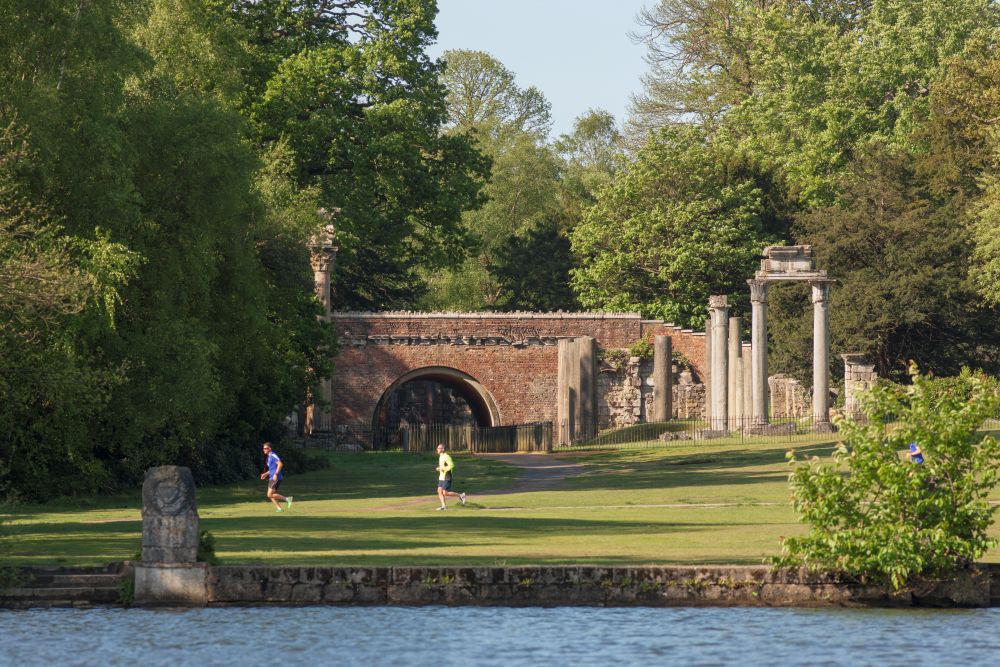
Leptis Magna Ruins, Windsor Great Park
Queen Elizabeth II was gifted this 100ft high, 12-ton Totem Pole by the government of British Columbia in 1958 to mark the province’s centenary. The totem pole was carved by master craftsman Chief Mungo Martin of the Kwakiutl Indians, a tribe which is located on Vancouver Island. The pole’s elaborate ornamentation still fascinates children and adults alike. Take a moment to sit and admire its many faces, beside the rippling water of Wick Pond and Virginia Water lake.
///forest.gifts.tower
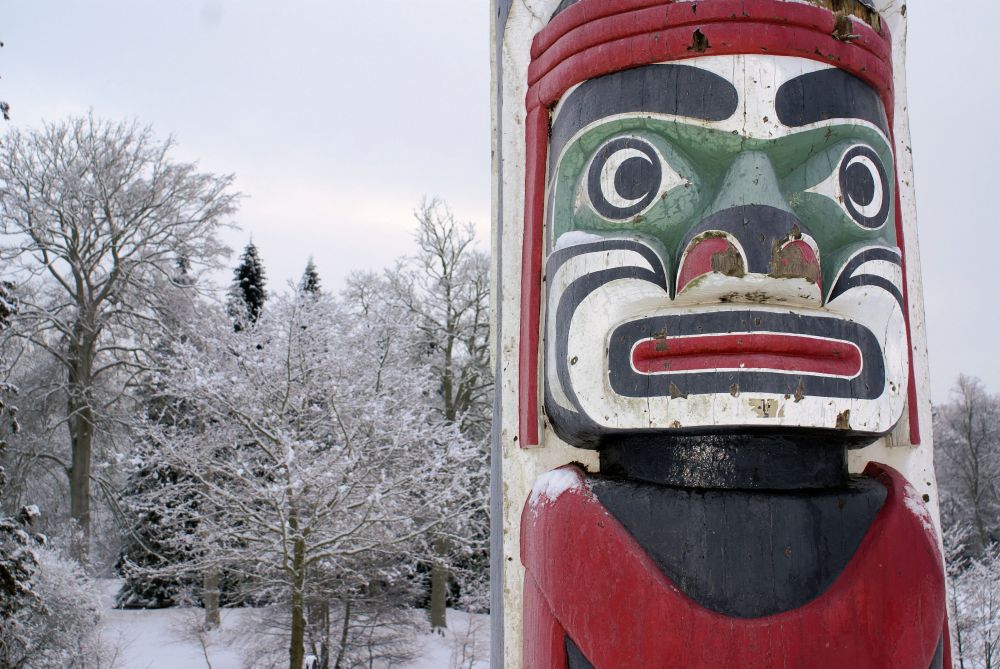
Totem Pole, Windsor Great Park
Two horses who have drawn the royal carriages on state occasions, including Queen Elizabeth II’s Diamond Jubilee, are immortalised in a life-sized sculpture on a Windsor roundabout close to the Long Walk. The Windsor Greys – Storm and Daniel – were placed on the roundabout leading to Windsor Great Park to commemorate the 60th anniversary of Queen Elizabeth II's coronation in 2013. They were unveiled by Queen Elizabeth II on 31 March 2014, accompanied by The Duke of Edinburgh and by The Duke of Cambridge, Patron of the Windsor Greys Appeal.
Queen Victoria began the tradition of owning Greys, housed in the Royal Mews at Windsor Castle, and only moved to London in the reign of George V. They must be at least 16.1 hands and are chosen for their steady temperaments and their stamina. They only draw carriages in which members of the royal family are seated.
Queen Wilhelmina of the Netherlands gave George VI five Greys to thank him for housing her in Britain during World War II. All five were part of the team of eight that pulled the Gold State Coach at the Coronation in 1953.
You will find the statue on the roundabout at the junction of the A308, Kings Road and the A332.
///puddles.length.that
The Windsor Lady is one of four memorials to Queen Elizabeth II’s Diamond Jubilee in 2012 and it’s located in Windsor’s Bachelors Acre. The Windsor Lady was a gift from a Maidenhead sculptor, Lydia Karpinksa, who works in bronze in the figurative tradition. The statue depicts Queen Elizabeth II somewhat informally dressed and surrounded by six Corgis.
The Welsh Corgi came originally from the hilly counties of Pembrokeshire and Cardiganshire. Once described as ‘an odd little animal with a face like a fox, a rump like a guinea-pig, and front legs which are always short and somewhat bowed’, the Corgi was not recognised by the Kennel Club as a breed of championship status until 1928.
Most people had never heard of Corgis until 1933 when they saw a photograph of a seven-year-old Princess Elizabeth holding a Corgi puppy at Glamis Castle. Queen Elizabeth II owned Corgis and the cross breed, Dorgis, for the rest of her life.
///smart.note.diary
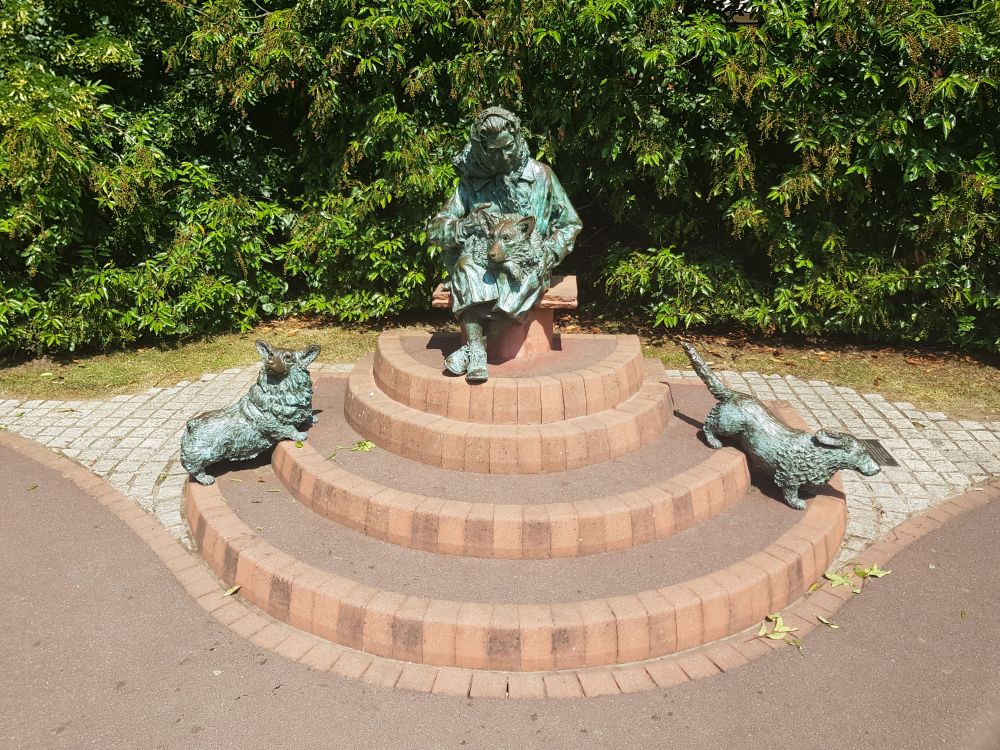
The Windsor Lady
Sir Antony Gormley’s Edge II Statue was commissioned by Eton College in 2001 and it has been attached high up on Common Lane House since 2002. Eton College wanted to increase their modern art collection by adding pieces by the best living contemporary artists. It was Gormley’s decision as to where the statue should be installed on College grounds, hence the statue faces looking down onto the path, and now onto an Eton Walkway marker. Eric Anderson, former Provost of Eton, pointed out: ‘For a school keenly interested in rank, relative position and the long strive upwards, his presence above the street is a reminder of another way of looking at the world.’
Read our Sunday Stroll through Eton blog which features the Edge II statue as well as lots of other fun things to see and do in Eton.
///values.spike.vocab
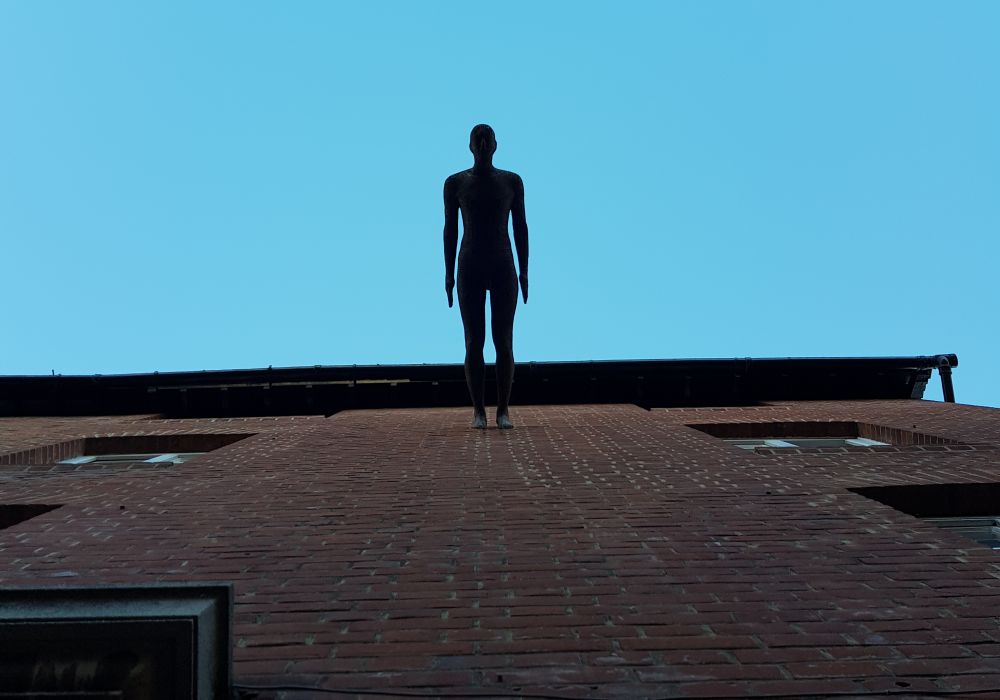
Sir Antony Gormley's Edge II statue in Eton
The Irish Guards Statue stands in Windsor where Park Street, High Street and Sheet Street meet. It was unveiled on 24 June 2011 by the Mayor Asghar Majeed and Major General William Cubitt. The Irish Guards had recently returned to Victoria Barracks, Windsor, from a six-month tour of Afghanistan where they had suffered three casualties.
The statue depicts modern combat gear and Osprey body armour, as used in Afghanistan. The 6ft (1.8m) figure was sculpted by former Army officer Mark Jackson, using bronze from statues salvaged during the conflict in Iraq. It stands on a plinth surrounded by cobbles from Afghanistan and rises 15ft (4.5m) from the pavement. Mark is a former paratrooper who studied art in Florence, Italy, after his career was cut short by a serious accident.
///sunk.salad.medium
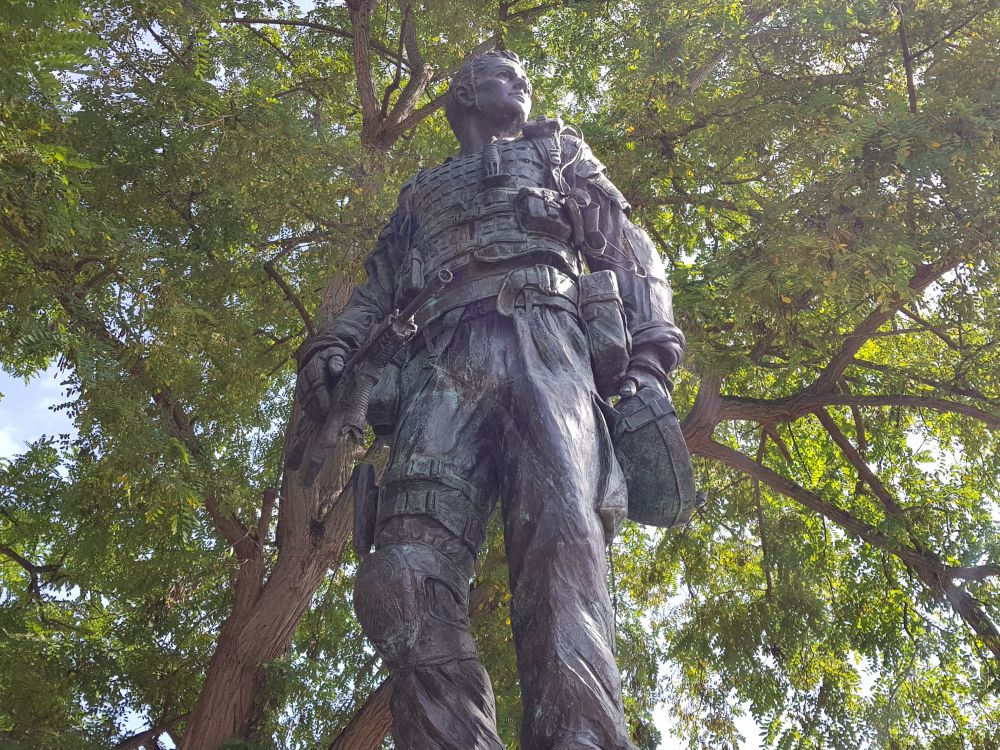
Irish Guards Statue, Windsor
This iconic bronze statue majestically situated at the junction of Windsor High Street and Castle Hill was designed and constructed by Sir Edgar Boehm. It was erected in 1887, on a base made of red granite, in celebration of Queen Victoria’s Golden Jubilee. The cost of £2,500 was raised through public subscriptions. Queen Victoria suffered from headaches and the statue shows her wearing a small coronet, much preferred to the heavy crowns of state.
///keeps.piper.homes
The Jubilee Fountain is located in The Goswells park and was installed and opened to mark Queen Elizabeth II’s Diamond Jubilee in the summer of 2012. The design of the fountain is inspired by the crown jewels.
The fountain is 25m long with a circular pool at the centre. In the middle of the pool is a geyser with a "crown" of 60 water jets. Take a seat on one of the surrounding benches, admire the ornamental planting and relax for a while.
///star.adding.comet
A riverside walk in the direction of the railway viaduct, just near to Windsor’s Alexandra Gardens, brings you to a pretty unique point of interest: a full-size replica World War II aircraft!
The Hawker Hurricane is a lasting memorial to Windsor resident Sir Sydney Camm CBE FRAeS (1839-1966). It bears the markings of an aircraft flown in the Battle of Britain by Squadron Leader John Grandy who, as Marshal of the Royal Air Force, Sir John Grandy GCB GCVO KBE DSO KStJ, was Constable and Governor of Windsor Castle from 1978-88.
You can read more about Windsor’s Historic Hurricane in our blog.
///sparks.popped.beyond
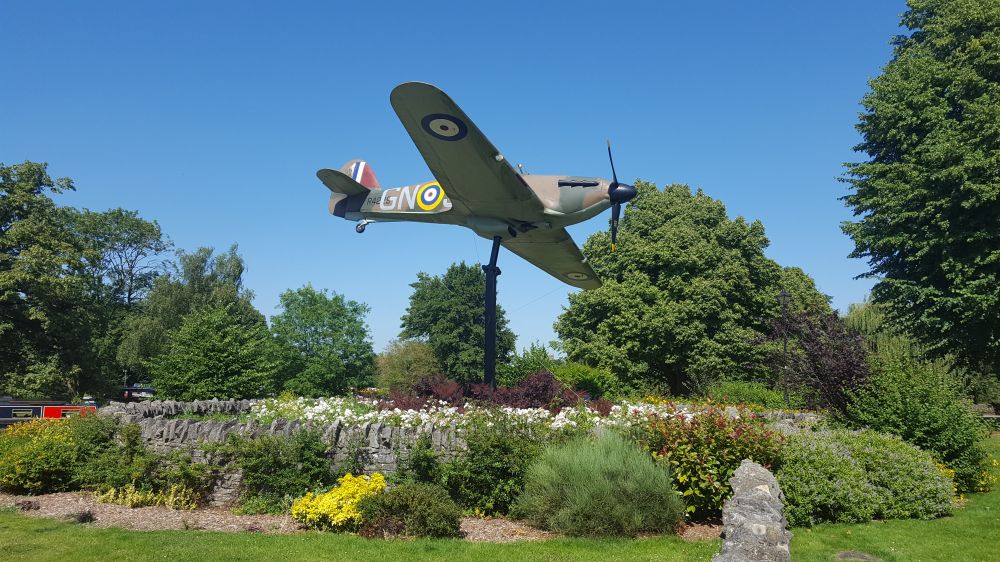
Sir Sydney Camm's Hawker Hurricane
The novelists and poet Thomas Hardy originally trained as an architect and worked as a draughtsman in the 1860s. He contributed to designs for a number of churches and recently a highly decorative altarpiece (known as a reredos) attributed to him was discovered completely by chance in All Saints Church in Windsor.
During a hunt for the church’s foundation stone, a torch was shone behind a panel and the incredible altarpiece was discovered! Thanks to donations from the Thomas Hardy Society, Prince Philip Trust, Louis Baylis Trust and the general public, a programme of works to reveal the altarpiece in all its splendour took place and now the reredos is on display and has transformed the whole building. The new and arresting focus at the altar enhances the beauty of the church. The church operates an ‘open house’ on a Monday morning and visitors are welcome to come and see the incredible Hardy-designed altarpiece in all its glory.
///logs.flag.unions
Thomas Hardy Altarpiece, All Saints Church, Windsor
The Burning Bush is a very elaborate Grade II listed lantern designed by Henry Woodyer in 1864, in a florid Gothic style. The lamp’s design echoes Eton’s coat of arms which was granted on 1 January 1449. The crest features both a golden lion on a red background and a golden fleur de lys on a blue background, which reflected Henry VI’s position as King of France as well as England – the first monarch to be officially crowned king of both countries. The three lilies rendered in iron on the main body of the lamp are the symbol of the Virgin Mary, the patron saint of Eton College.
The Burning Bush was originally a gas lantern which was later converted to electricity. In 1963, the Burning Bush was moved from its island in the middle of the road to its current pavement position at the front of Eton College’s School Hall. The daily meeting of schoolmasters, ‘Chambers’ historically took place here.
///points.text.patrol

Windsor Mural, image Windsor & Eton Photo Art
The colourful Windsor mural is situated on the wall of a railway bridge, under the arches near the Alexandra Road and Alma Road car parks. It features a castle, reflecting the town’s royal connections, and swans, which are a familiar sight on the River Thames at Windsor. The mural is part of a nationwide initiative undertaken by Network Rail.
A Network Rail spokeswoman said: “We’ve been working with artist Lionel Stanhope nationally and have chosen designated locations as part of a national scheme to smarten up areas.”
///audio.draw.rush
The War Horse Memorial sits atop the Heatherwood Hospital roundabout as a tribute to the role the animals played in the conflict. The 2.6m high statue was designed by sculptor Susan Leyland.
Beneath the memorial a time capsule was buried containing artefacts reflecting the wider story of the war effort and how animals were used under often gruelling conditions.
An area of reflection including seats and interpretation panels opposite the memorial gives passers-by the opportunity to learn more.
///launch.trades.entire
On platform 3 of Maidenhead railway station you’ll find a statue of Sir Nicholas Winton MBE.
The statue was installed in 2010 as a memorial to Sir Nicholas Winton from Maidenhead. During the Second World War, Winton devised a programme to transport hundreds of unaccompanied Jewish children by train from Prague to London and find foster families for them. Thanks to him a total of 669 child refugees were rescued.
///forgot.ending.gains
A walk around the fabulous grounds of National Trust Cliveden near Maidenhead (just outside the Royal Borough) will reveal masterpieces of antique, baroque and 19th-century sculpture. The location of each precious piece was carefully planned by William Waldorf Astor, who purchased the estate in 1896, and later by his son and daughter-in-law Waldorf and Nancy Astor.
Thanks to former residents the Duke and Duchess of Sutherland, there was already a sculpture collection at Cliveden but to this, William Waldorf added antiquities and sculptures that he commissioned and collected. You’ll discover pieces as diverse as ancient Egyptian granite baboons, a suite of Roman sarcophagi and the flamboyant Fountain of Love sited prominently on Cliveden’s Grand Avenue. Free access for National Trust members but please check latest admission arrangements.
///status.panels.reach
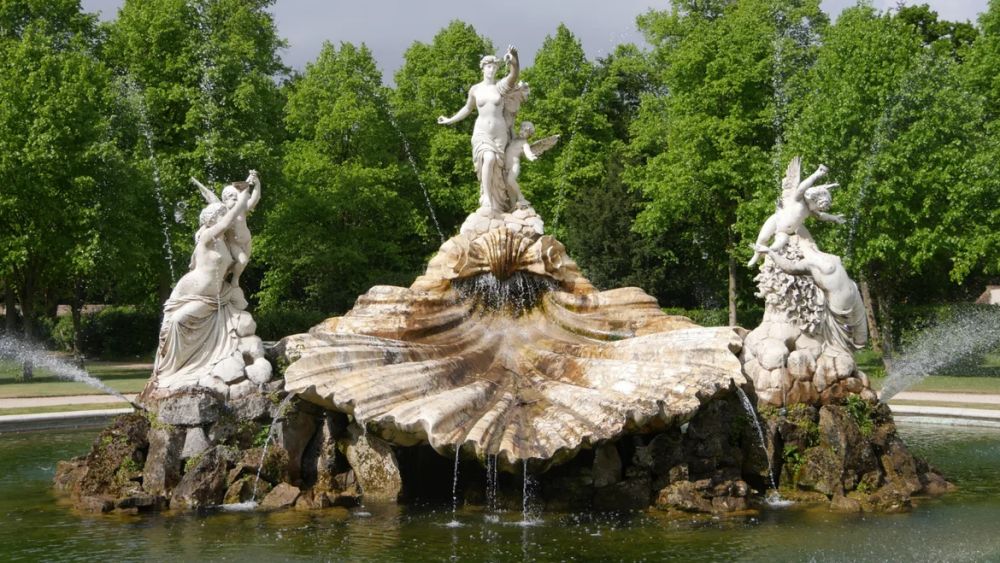
Fountain of Love, National Trust Cliveden
Just outside the Royal Borough you’ll discover the National Trust’s historic site at Runnymede, where the Magna Carta was sealed in 1215. The meadows here are perfect for a walk and the River Thames flows on through. This is the site of several memorials to the struggle for freedom. As well as the monument to Magna Carta, you can visit memorials to JFK and the Allied Air Forces of the Second World War.
A walk through the meadows will also reveal two major artworks by world renowned artists: The Jurors by Hew Locke and Writ in Water by Mark Wallinger, in collaboration with Studio Octopi.
Writ in Water celebrates the enduring significance of Magna Carta. Set in the heart of this ancient landscape, this award-winning artwork reflects upon the founding principles of democracy, and through a meeting of water, sky and light, provides visitors with a space for reflection and contemplation. The artist has drawn inspiration from Clause 39 of Magna Carta and the fundamental principles of justice it embodies.
///palms.guilty.hips
The Jurors is made up of 12 intricately worked bronze chairs standing together on the ancient meadow. Each chair incorporates symbols and imagery representing concepts of law and key moments in the struggle for freedom, rule of law and equal rights. It invites visitors to sit and take a moment to reflect on the issues and histories depicted.
///meant.ideas.insect
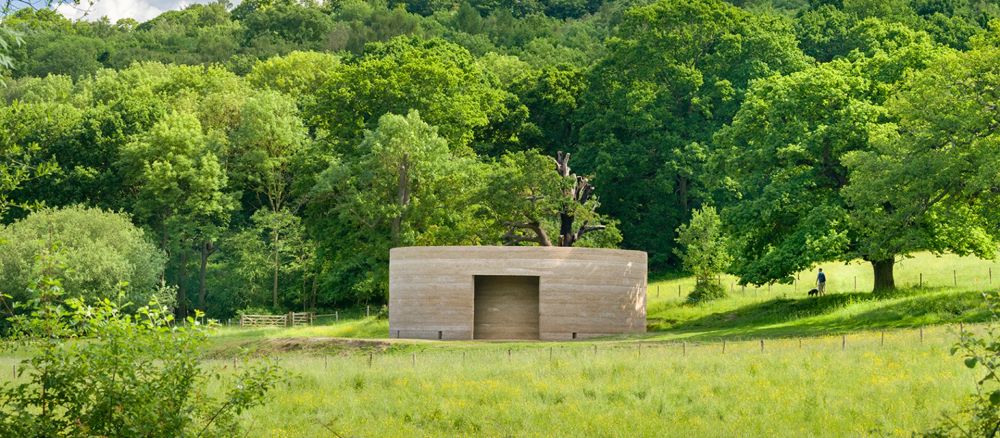
Writ in Water at National Trust Runnymede copyright National Trust images/Andrew Butler
Want to receive Windsor tips, ideas and inspiration? Subscribe to our enewsletter!
Want to hear more? Sign UpX





